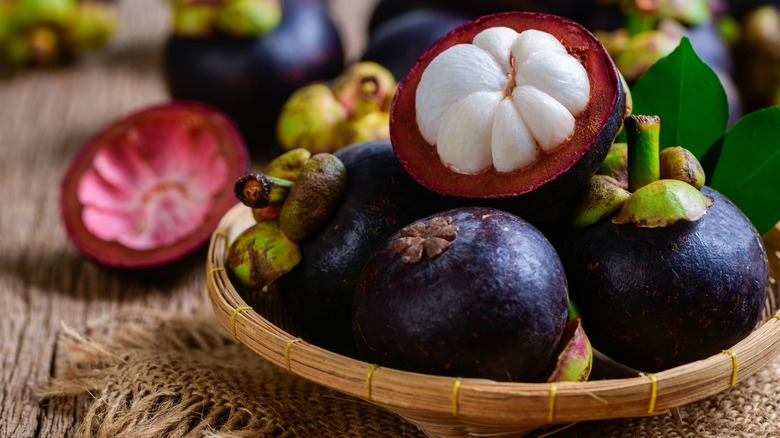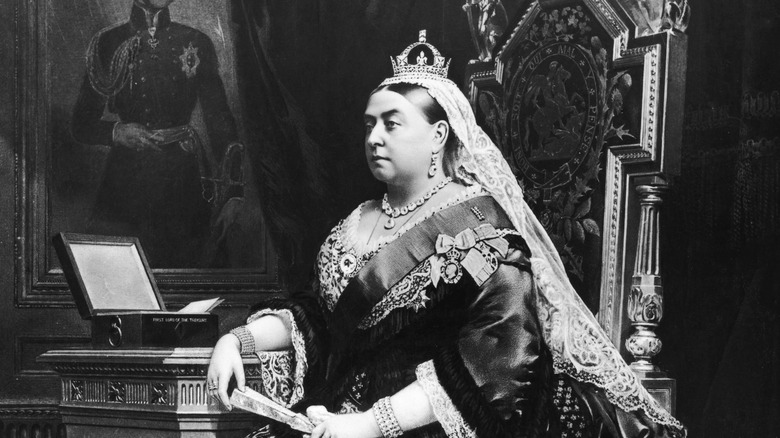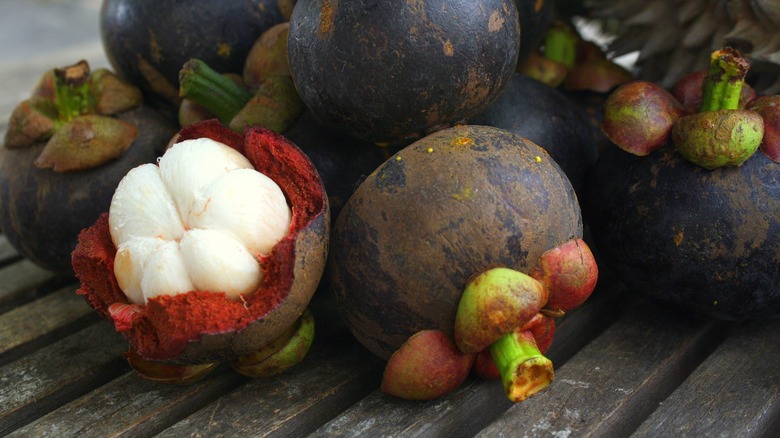Inside Queen Victoria's Rumored Passion For Mangosteens
From strawberries to these 12 types of citrus, fruit is popular around the globe. Indeed, pineapples (which actually are sweeter in the morning) were once the status symbol of 18th-century European aristocrats, and the humble banana was thought fascinating enough to be debuted at the World's Fair in Philadelphia in 1876. But there is one fruit considered so rare and glamorous that it was dubbed the "Queen of Fruit" — The Mangosteen.
More than just the "Queen of Fruit," the mangosteen was allegedly one queen's favorite fruit: Queen Victoria. Mangosteens were first cultivated in Europe in the middle of the 19th century, at the peak of Queen Victoria's reign, and there's probably a reason for that. The Queen had a voracious appetite spurred on by a strict diet imposed on her during her adolescence, and her love of food, particularly foreign delicacies, was infamous. She had a passion for large feasts and fresh fruit, and she was known to source unusual dishes to satiate her powerful appetite.
Queen Victoria's mangosteens
Queen Victoria, the monarch who lent her name to the Victorian Era (1820-1914), presided over a period of vast colonial expansion into Africa and India, and she had a penchant for exoticizing foreign cultures. She wore the Koh-I-Noor Diamond, taken from the Sikh Empire, befriended the Mahajarah Duleep Singh, and was even "gifted" a Nigerian princess, whom she brought to England and adopted.
Queen Victoria's love of all things foreign extended to her taste in food. The queen apparently loved mangosteens so much that she offered knighthood to anyone who would be able to bring her a mangosteen from their voyages abroad. Unfortunately for Queen Victoria, no one ever succeeded in this mission, meaning that Spamalot was robbed of a "Knights of the Mangosteen" musical comedy number.
The Queen's love for this tropical fruit, however, is rumored to be the namesake for its own moniker, the "Queen of Fruit." Although any mangosteen aficionado will tell you it deserves that honor in its own right.
What makes mangosteens so special?
Setting eyes on a mangosteen for the first time is truly a delightful moment. Round and purple, with a small, hat-like stem and leaves, their thick aubergine skin is cut open to reveal plump sections of bright white flesh. And if you think that mangosteens look cartoonish, there's probably a reason — the Pokémon Bounsweet is modeled after the adorable little mangosteen.
The taste of a mangosteen is often compared to a peach, with a bit of a tropical tang, reminiscent of citrus or lychee. Native to Southeast Asia, they were banned in the U.S. up until 2007 due to fears that they would bring with them Asian fruit flies that could wreak havoc on local agriculture. They are still relatively rare in North America but often found in American and Canadian cities with large Asian populations — though they remain exorbitantly expensive compared to how they are priced in their native countries like Thailand and Vietnam. Anyone who gets the chance to bite into one of these succulent delights will likely understand Victoria's fascination with the delicate fruit.



